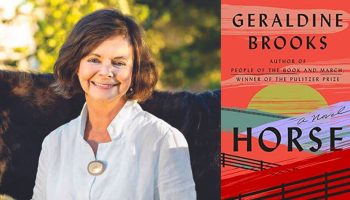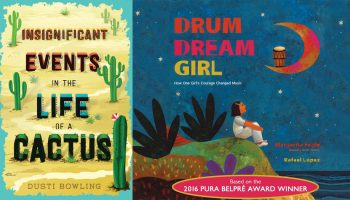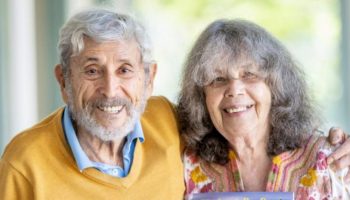In a week packed with literary arts events, members of the 1874 Society, Eleanor B. Daugherty Society and Bestor Society gathered for a showcase of resilience through writing and teaching. A panel on writing and resiliency, held by the Chautauqua Foundation, opened the conversation on how the process of writing and teaching has changed in the past few years.
The panel, which took place Tuesday afternoon in Smith Wilkes Hall, featured Chautauqua’s Michael I. Rudell Director of the Literary Arts Sony Q. Ton-Aime as the moderator, with writers Melanie Ritzenthaler and Robin Lee Jordan as the panelists. Ritzenthaler holds a doctorate in fiction from Ohio University, where she has taught creative writing classes. Jordan, the writing center coordinator at Just Buffalo Literary Center, works with teenagers to inspire creative writing across different media types.
The panelists focused on their background as writers and how it has affected their teaching, and how both writing and teaching have changed since COVID-19. Ton-Aime asked Ritzenthaler and Jordan to discuss their individual experiences as writing mentors, as they teach in different settings.
“It’s so easy to be turned off from the act of writing because it’s so often paired with the act of (that writing) being read and, therefore, judged and critiqued,” Ritzenthaler said. “What I really love bringing to the table as a teacher is this idea that I’m learning from my students, too.”
Ritzenthaler connected her experience of writing to the idea of resiliency; being a writer is also being rejected as a writer. This is something she has struggled with, but her students have shown her a new perspective.
“When I’m teaching these creative writing workshops, I’m encouraging my students and I’m seeing that they take the encouragement seriously, that they want to be able to put their work out into the world,” Ritzenthaler said. “It reminds me to treat myself with the same amount of encouragement that I’m giving them — that having someone who encourages that resilience is something that I need to turn towards myself, as well.”
Jordan’s students have also encouraged her resiliency.
“I have learned and unlearned a lot … working with these young writers,” Jordan said. “One thing that we do is, we use writing prompts, so I get to basically take the workshops with them. … I get to learn alongside them, which is really awesome.”

Jordan’s own writing has grown and evolved from working with young writers. Her students’ reaction to the world shines through their pages and words.
“One thing I love about teens is defiance. I think that’s something that comes alive in their writing, too,” Jordan said. “That defiance is such an interest for me in my writing. They really inspired me to really hold on to my own voice and what makes me different and unique.”
While Jordan agreed with Ritzenthaler’s earlier statement that being a writer is becoming used to rejection, she said that idea can be hurtful for young writers, and is something she avoids teaching.
“It’s just like you said, ‘writing is rejection,’ ” Jordan said in reference to Ritzenthaler. “I no longer talk to my students about that because it really limits what writing can be.”
Ton-Aime joined the conversation, sharing that he believes writing and teaching are directly connected.
“For me, teaching is where I do most of the writing, or at least most of the training for my writing,” Ton-Aime said about directing and participating in writing workshops.
The conversation then shifted to how COVID-19 changed writing education. Ton-Aime joined Chautauqua’s staff six weeks before the pandemic, which drastically changed his approachto his work.
“I was very much looking forward to working with the different schools (in Chautauqua County) … then we had to move to online teaching. I couldn’t go to the classrooms anymore. (I) couldn’t go in, sit next to a child and try to hear what they will tell me,” Ton-Aime said. “This presented a big challenge for my teaching and also my writing. My writing suffered because of that.”
Ton-Aime asked Ritzenthaler and Jordan how the pandemic changed their teaching methods and what obstacles they faced. Ritzenthaler responded that it’s important to be able to write in “an active community.”
During the pandemic, she wanted to remove any extraneous writing assignments for her students and instead focused on writing as a communication tool and a community builder.
“I really preserve the workshop for space where they can see that writing is an act of defiance, writing is a way of processing through things, writing is a way of engaging with the world,” Ritzenthaler said. “I wanted to reserve that space for my students, and ultimately honor the community we’ve built together.”
COVID-19 changed the role of being a teacher, Ritzenthaler said, and writing during, and surviving, the pandemic required resilience.
“The pandemic really changed my role as a teacher and how I can support the students. … The students were ultimately coming day by day, week by week to read each other’s work and to celebrate it, which I thought was just so important amongst everything else that was going on,” Ritzenthaler said. “… Writing is an act of resiliency. Unfortunately, the work doesn’t write itself, so once you actually get to return to the page, often that’s very hard.”
For Jordan, the pandemic put stress on the need to be productive, which can be damaging to a writer.
“We’re talking a lot about making sure not to promote this message of ‘Oh, we have this time, let’s be productive.’ … I think putting that kind of pressure on people to be productive wasn’t the best message,” Jordan said. “… Writing is therapy, is connection, is seeing each other, is an expression of release, is distraction, learning, imagining the future.”
This perspective on writing, and the urge from her young writers to create change, inspired Jordan to connect her students with activists in Buffalo.
“One thing that I did before, but that felt even more important, was connecting my students, writers and artists, with other young people that might be doing activism,” Jordan said.
She wanted to show her students that writing can be used to tackle difficult, intimidating issues.
Ton-Aime then asked how resiliency in writing can be translated to life in general.
Ritzenthaler said she hopes her students continue to write after they leave her classroom and finds writing to be a somewhat democratic process — though not necessarily equal. She feels this concept allows the lessons of writing to move beyond the art itself.
“We might think of writing as being a somewhat democratic process, because anyone can sit down with pen and paper. You can find a book with basically any kind of topic for any kind of writer. So we think, therefore, writing is super-accessible to everyone. But not every writer has access to the same amount of resources,” Ritzenthaler said. “It’s not inherently democratic to the writer who is unable to have the time or the space or the money or the ability to do those things. For me, it’s really about seeking out those spaces where we can support writers, where we can support writing communities.”
Jordan believes there is a writer in everyone and that writing is a connective process. She led panel attendees in a writing activity.
“We’re all writers. We all communicate, whether you do that orally for storytelling, whether you write emails, letters, texts. I think we’re all writers. I really love showing people what kind of writer they are, no matter how they identify,” Jordan said. “… I like to have people create in the moment, spontaneously, because I think it’s a really important act. It helps build community, and I think it helps demystify this idea of ‘I’m a writer.’ ”
The activity started with writing an “unanswerable” question, and then trading that question with a partner. Without reading the question, the partners would write about something in nature that symbolizes resilience; this would be a possible answer to the original question. Through this activity, attendees found that they were more alike than they thought.
“This idea of collaborative art making can really build community and connect you to someone that you might not have ever met before and that can give you answers that you didn’t even know you were looking for,” Jordan said.




